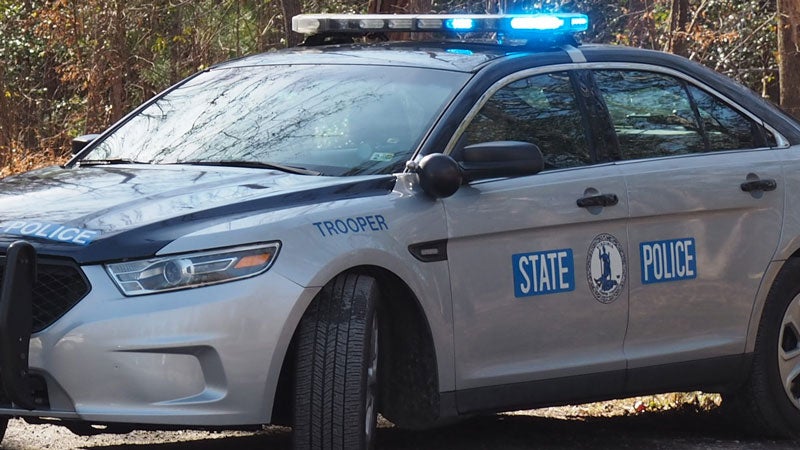Bamboo can become a real nuisance
Published 12:20 pm Wednesday, September 6, 2017
State now allowing localities to regulate the invasive plant
By Ryan Kushner
Staff writer
Bamboo may be a panda bear’s favorite snack, but in Virginia, the invasive plant is anything but welcome.
The nearby presence of running bamboo has been a longtime headache for Windsor resident Mark Middlecoop, who addressed the Isle of Wight County Board of Supervisors this month to urge its members to establish an ordinance that would penalize property owners whose bamboo spreads to neighboring yards.
Middlecoop said he has been experiencing the issue firsthand at his property, stating that his next-door neighbor’s bamboo is has been creeping over to his land, cracking his driveway. {mprestriction ids=”1,2,3,4,5,6″}
“What I wanted to do is get this thing on the ground and running so that by July 1, 2018, there will be something that the county has in place to address it,” said Middlecoop of running bamboo in the county. “This stuff is very invasive and will grow like crazy.”
Middlecoop is not the only one in Virginia looking for more regulation of the pesky plant.
A bill passed by the Virginia General Assembly this year gives localities the authority to establish a running bamboo ordinance to enforce a civil penalty for residents who fail to control their bamboo.
The bill, passed by the Senate in February, states that any civil penalties for first-time bamboo violations are not to exceed $50, while subsequent violations after 12 months are to remain at $200 or below.
The Virginia Department of Agriculture and Consumer Services has been tasked with developing a model ordinance for localities to use, to be completed by July 2018.
Middlecoop said he wanted to make sure the Board was aware of the bill.
“I’m going to make sure that I’m going to push this through,” Middlecoop said in a phone interview of a running bamboo ordinance in the county. “I’m not going to let them drop the ball on this.”
While bamboo is a broad genus with multiple species, two of the most common types in Virginia are known as clumping and running bamboo, their colloquial names are a reflection of their growing characteristics, according to Henrico County Extension Agent for Agriculture and Natural Resources Ed Olsen.
Clumping bamboo tends to grow in clumps, said Olsen, their rhizomes (underground stems) remaining in the vicinity of where they are planted, like relatively contained bamboo islands.
Running bamboo is the problem child, however. Its rhizomes can spread up to 100 feet in all directions from the mother bamboo plant, according to Olsen.
Once it spreads, running bamboo’s reign begins, and ridding oneself of it can take years, no matter the method used, according to Olsen.
“It’s a dedicative process,” said Olsen of removing the plant.
There are three main methods of eliminating the bamboo, according to Olsen. The first, and the most effective method of purging oneself of clumping bamboo, is to dig up the plant at its roots.
It sounds like a simple solution, but running bamboo doesn’t give up so easily, according to Olsen. If the extractor doesn’t collect every rhizome of the plant, which are usually numerous, the bamboo’s shoots are sure to rear their resilient heads once more.
“Any small piece you leave can start to grow again,” said Olsen, thus the excavations will likely need to be a ritualistic endeavor if one is determined to win the war.
The second method is cutting down the bamboo and then persistently mowing the plant like one would mow one’s lawn. Eventually, the bamboo will yield.
“That could take several years,” Olsen said.
Herbicides are the third strategy of attacking running bamboo, and Olsen said glyphosate, found in products such as Roundup, has been found to be effective over time.
Olsen said to let the shoots grow enough to peak out of the ground and then apply the glyphosate.
Olsen said running bamboo and clumping bamboo are largely indistinguishable from each other above ground.
Bamboo is native to Asia, and has been known to grow in water as well as dry climates, according to Olsen.
Bamboo has some history in Isle of Wight, its durable material used as fishing poles and frog gig shafts at times.
There is a cluster of bamboo at the edge of the South Mason Street entrance to Windsor Castle Park, right up against town land but not quite, according to Smithfield Mayor Carter Williams, and thus the town doesn’t use any methods to control its spread there. The park is largely shielded from the bamboo by the marshland, where Williams said bamboo has difficulty growing.
Williams said the bamboo in that area of the town was first planted in the early 1960s by a Saul Seward, who lived in a house on Cedar Street.
“I don’t have a clue why he planted it,” said Williams. {/mprestriction}





